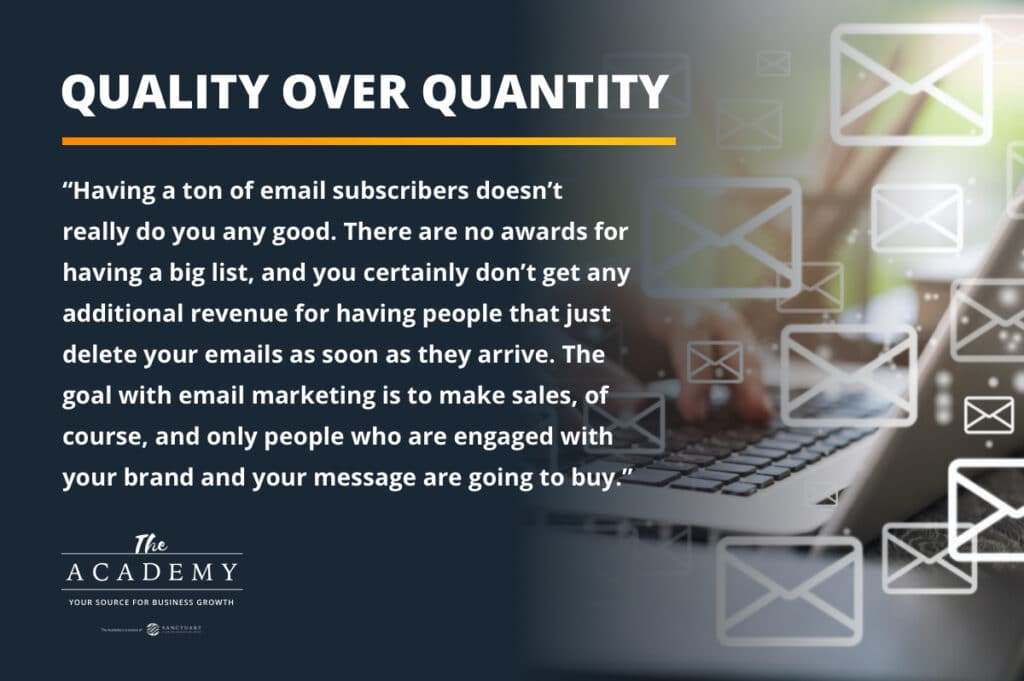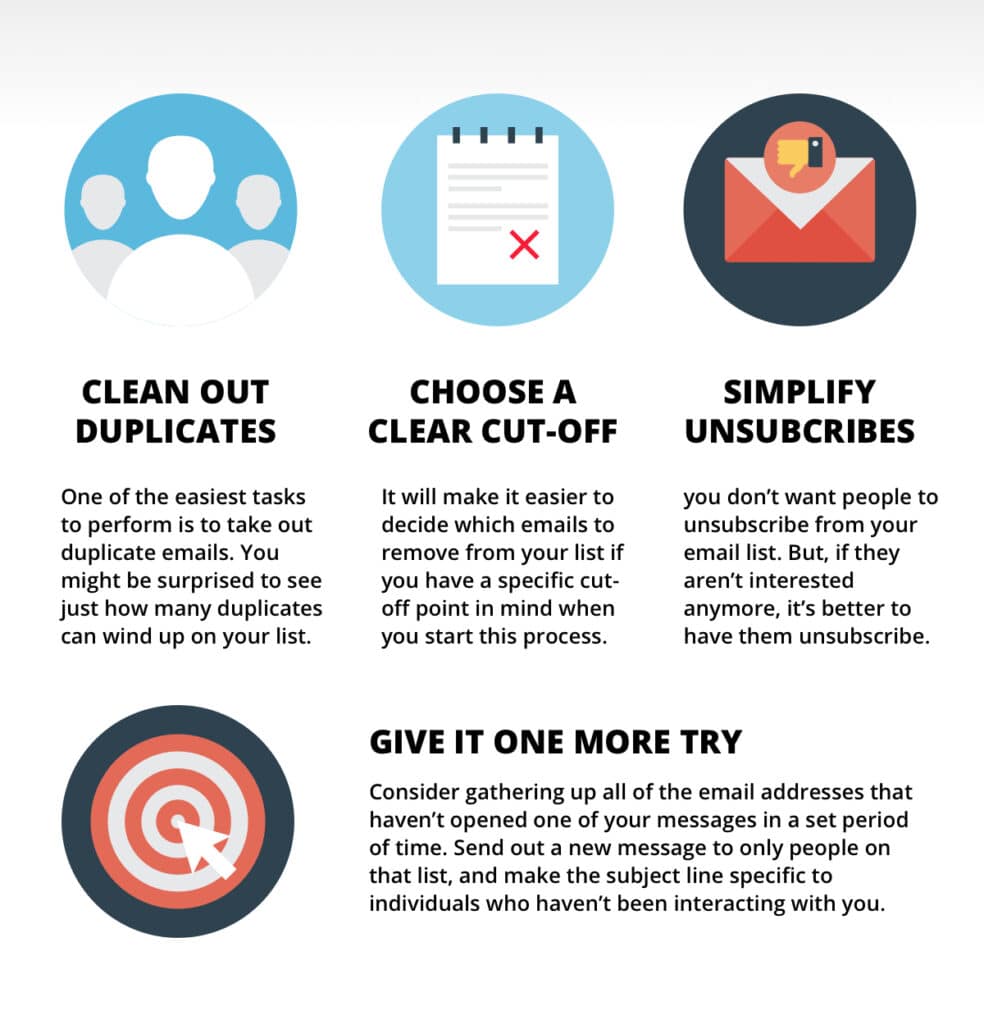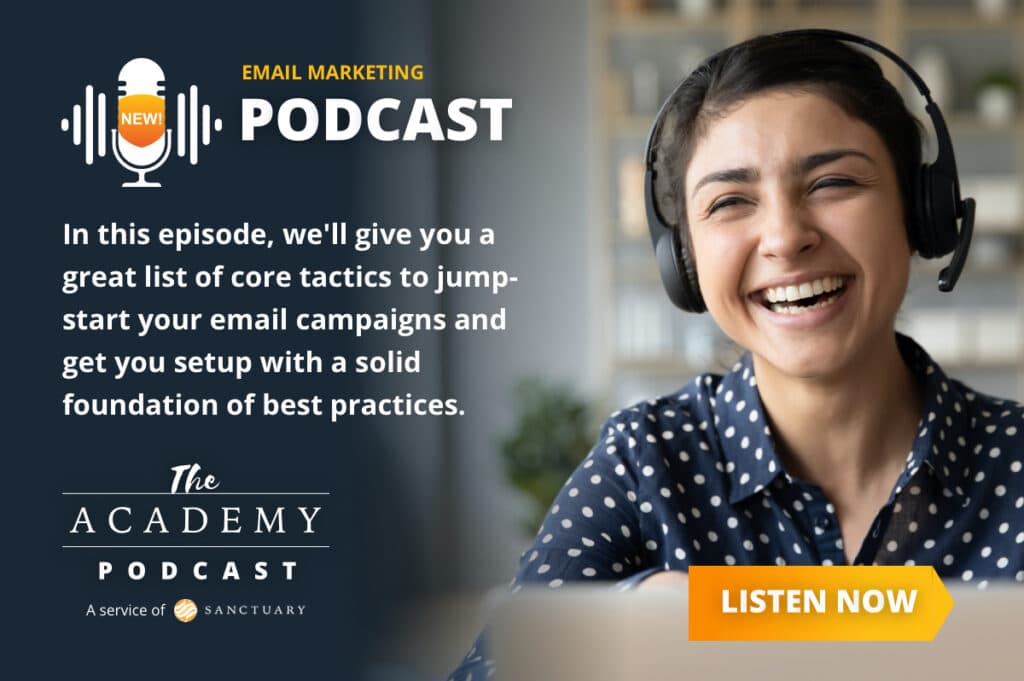
At this point in the evolution of digital marketing, few people need convincing of the value of an email list. Having a strong list is a great way to connect directly with customers and potential customers alike, alerting them to sales, new products, and other promotions.
That list, however, is only going to be valuable if it remains in good condition over time. If the quality of your list fades, the results you get from your email marketing will fade, as well. Email list scrubbing is one tactic you can use to support your list, and it will only take a bit of your time on a periodic basis. Let’s dive into this topic below to learn more about what it is, how it works, and why you should bother.
What is Email List Scrubbing?
Email scrubbing is a term used to describe the process of removing subscribers from your list who are no longer engaged. This is different from removing people who ask to unsubscribe, which is something you also need to do. In this case, it’s not that the individual asked to be removed, rather they are simply not engaging with your content anymore and can safely be ruled out as a potential customer moving forward.
You should easily be able to access your email marketing system to manually remove subscribers as you see fit. It doesn’t take as long as you might think to go through this process, and you don’t have to do it every week, or even every month. As a starting point, try to handle this task twice per year and then adjust as necessary. If you have a big, active list, it might be necessary to scrub it a little more often, while a smaller list could be fine with just an annual cleaning.
Focus on the Right Numbers

One issue that often comes up with email list management is falling in love with your raw subscriber count total. You feel good about your list building efforts as your number of subscribers grows, and you have worked hard for each of those new names that get added to the list. With such a connection to the idea of a big list, you might shudder at the thought of voluntarily dropping people in the scrubbing process.
But here’s the thing – having a ton of email subscribers doesn’t really do you any good. There are no awards for having a big list, and you certainly don’t get any additional revenue for having people that just delete your emails as soon as they arrive. The goal with email marketing is to make sales, of course, and only people who are engaged with your brand and your message are going to buy. So, looking at your subscriber count is putting your focus in the wrong area, and you’d be well-served to pay attention to other numbers instead.
So, if you aren’t going to concern yourself with total subscriber count on your email list, what numbers should you be tracking? Open rate is a great place to start. Maintaining a strong open rate – something north of 20% in many market niches – will help you stay in good stead with email providers and will make sure your messages are being seen by an interested audience. When you think about it, maximizing the number of people who actually see your message is far more important than how many people receive it, anyway. You aren’t going to get conversions out of messages that are received and immediately deleted, so turn your attention toward open rate and work hard at boosting that number.
Speaking of conversions, that’s another vital metric to track along the way. Whatever you define a conversion to be – whether it’s a sale, filling out a form to request a quote, etc. – you want as many of the emails that get opened to turn into conversions as possible. Once you start to think about email marketing as an endeavor focused on open rates and conversions rather than subscribers, you’ll be headed in the right direction.
A Few Important Benefits
There wouldn’t be any point in going through your email list to scrub it of disengaged members unless you stood to benefit from that effort. Fortunately, you do stand to benefit, and some of the positive outcomes you may experience include those listed below –
- Improve open rates. It stands to reason that if you are taking people off of your list who weren’t opening your messages anyway, your open rate moving forward will go up. Some simple math shows how this works. Imagine that you have a list of 1,000 people, and your current open rate is 20%. That means, of course, that 200 people are opening each message you send out. From that list, you decide to scrub off a different set of 200 people who haven’t opened any of your messages in the last month (or few months, or whatever time frame you select). Now, you have a list of 800 people, and you should still get roughly 200 of them to open the message, since the people you took off the list weren’t opening them anyway. Now, doing that math reveals that your open rate has jumped from 20% to 25% by doing nothing more than wiping away people who had lost interest.
- Cut down on costs. You are very likely paying for your email marketing services based on how many emails you send. So, sending fewer messages means spending less money, which is always a good thing. You don’t want to cut down the size of your list arbitrarily just to save money on marketing costs, but if the people you cut out were never going to buy from you anyway, that’s a win-win situation.
- Spam issues. Everyone who engages in email marketing needs to pay attention to the topic of spam. When someone receives your message, they might wind up marking it as spam with their email provider, and that action will be recorded. If this happens too many times, you may be flagged as a spammer, and none of your messages will be delivered to their recipient’s inbox. This can certainly feel unfair, as the people who are marking your messages as spam likely signed up to receive them in the first place – yet they’ve decided to take this course of action rather than just unsubscribing. By consistently scrubbing your list, you’ll reduce the chances of being marked as spam simply because there will be fewer disinterested people to take such an action. Those who remain on the list have shown themselves to at least be somewhat interested, meaning they probably won’t flag future communications.
- Get better data. This last point isn’t a primary reason for keeping up with scrubbing, but it’s yet another small motivation to help keep you on track. With a clean list, you can gain a better picture of how your campaigns are performing and how they might be improved. Even a solid campaign can look pretty lousy if the list hasn’t been scrubbed in a while and it’s weighed down with people who lost interest long ago. Maintain a fresh list and you’ll be able to better trust what your metrics are telling you about engagement and conversions.
Tips to Get Started

It’s not complicated to scrub your email list periodically, but we’d like to provide you with a few quick tips to make sure you get off to a good start. The exact process will depend on the service you use to manage your email list, but keep these points in mind when you set aside some time to do the first scrub.
- Clean out duplicates. One of the easiest tasks to perform is to take out duplicate emails from your list. You might be surprised to see just how many duplicates can wind up within the list, depending on what system you use and how you collect subscribers. People will be put off by receiving more than one copy of the same message, and you might wind up in the spam folder as a result of this issue happening too many times.
- Choose a clear cut-off. It will make it easier to decide which email addresses to remove from your list if you have a specific cut-off point in mind when you start this process. For instance, you might decide that if someone hasn’t opened a message from you in at least six months, you can safely remove them from the list. After all, if you send messages weekly, that would mean they haven’t opened any of your last 20+ messages. What are the odds they are going to have a change of heart and start engaging again with your brand? Pretty low, in all likelihood. After you get into the process of scrubbing and start to see the benefits of keeping a clean list, you might gradually get more aggressive and remove subscribers after a shorter time period of inactivity.
- Simplify the unsubscribe process. Naturally, you don’t want people to unsubscribe from your email list. But, if they simply aren’t interested anymore, it’s better to have them unsubscribe than for you to need to go in and manually scrub the address later. So, be sure to display your unsubscribe link clearly and make the process as simple as possible. This will leave you with less list cleaning work to do because many of your recipients who are no longer interested will show themselves to the door.
- Give it one more try. Okay, so this isn’t exactly part of the email scrubbing process, but it is something you can try before you go ahead and delete a portion of your list. Consider gathering up all of the email addresses that haven’t opened one of your messages in a set period of time (six months, a year, or whatever you decide is appropriate). With that list established, send out a new message to only people on that list, and make the subject line specific to individuals who haven’t been interacting with you. Something like “Are You Still Interested?”, or “Special Offer to Come Back” may get the attention of at least some of these people. Even if you manage to bring just a few back into the fold, it will be worth your effort. The rest can then be safely deleted as you will have done everything you could do to bring them back.
Don’t make the mistake of thinking that email list scrubbing is a task you can afford to skip in favor of other activities. Once you get started, you’ll realize that periodically scrubbing your list doesn’t take much time and it delivers many benefits that can help improve your results. Thank you for taking the time to stop by and good luck!

Most Popular Articles

Seeing Favicons in Your Google Search Results? Here’s Why…
Have you noticed anything different in your Google Search results lately? Google added tiny favicon icons to its organic search results in January. It was…

Business Growth and Digital Marketing News & Tips 11-17-24
Are you encouraging and rewarding innovation? Lee Cockerell is the former Executive Vice President of Operations at Walt Disney World. A lover of traditional red…

Business Growth and Digital Marketing News & Tips 11-27-24
A culture of gratitude "Feeling gratitude and not expressing it is like wrapping a present and not giving it." – William Arthur Ward Beyond being…








